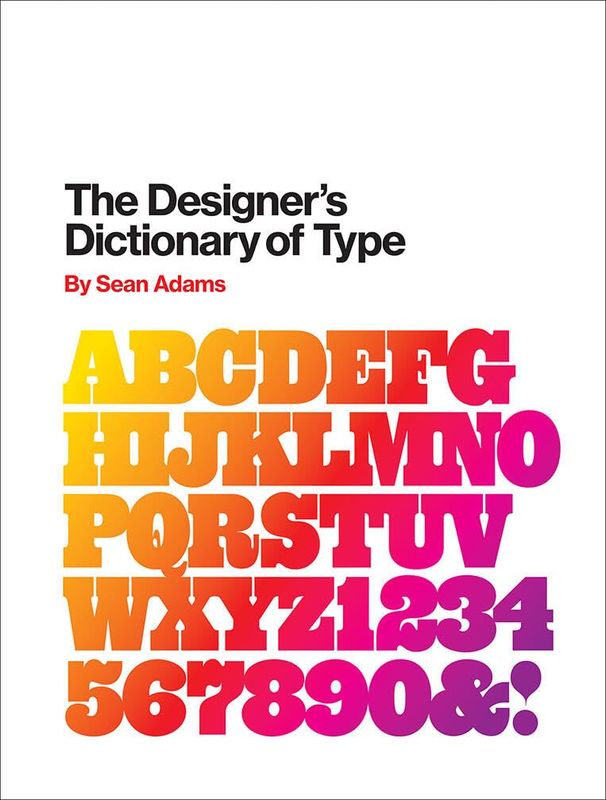Meggs' History of Graphic Design Book Summary
Explore the rich tapestry of visual communication in 'Meggs' History of Graphic Design', a comprehensive account that chronicles the evolution of graphic design from ancient times to the modern digital age. Through captivating illustrations and insightful commentary, this book unveils the cultural and technological shifts that have shaped design practices. Delve into the pioneering figures and movements that have influenced the world of design, from the invention of the printing press to today’s digital revolution. With each page, discover the stories behind iconic works and the innovators who crafted them, offering a fresh perspective on the visual language that surrounds us. This essential read not only informs but inspires, making you see design through a new lens.
By Philip B. Meggs, Alston W. Purvis
Published: 2016
"Design is not just what it looks like and feels like. Design is how it works."
Book Review of Meggs' History of Graphic Design
The bestselling graphic design reference, updated for the digital age Meggs' History of Graphic Design is the industry's unparalleled, award-winning reference. With over 1,400 high-quality images throughout, this visually stunning text guides you through a saga of artistic innovators, breakthrough technologies, and groundbreaking developments that define the graphic design field. The initial publication of this book was heralded as a publishing landmark, and author Philip B. Meggs is credited with significantly shaping the academic field of graphic design. Meggs presents compelling, comprehensive information enclosed in an exquisite visual format. The text includes classic topics such as the invention of writing and alphabets, the origins of printing and typography, and the advent of postmodern design. This new sixth edition has also been updated to provide: The latest key developments in web, multimedia, and interactive design Expanded coverage of design in Asia and the Middle East Emerging design trends and technologies Timelines framed in a broader historical context to help you better understand the evolution of contemporary graphic design Extensive ancillary materials including an instructor's manual, expanded image identification banks, flashcards, and quizzes You can't master a field without knowing the history. Meggs' History of Graphic Design presents an all-inclusive, visually spectacular arrangement of graphic design knowledge for students and professionals. Learn the milestones, developments, and pioneers of the trade so that you can shape the future.
Book Overview of Meggs' History of Graphic Design
About the Book Authors
Philip B. Meggs
Philip B. Meggs was a distinguished graphic designer, educator, and author, renowned for his significant contributions to the field of design. As the author of the acclaimed book "Understanding Graphic Design" and co-author of "Meggs' History of Graphic Design," he played a vital role in shaping design education and scholarship. Meggs' writing style is characterized by its clarity and depth, making complex design principles accessible to both students and professionals. His work emphasizes the interplay between historical context and contemporary practice in graphic design.
Alston W. Purvis
Alston W. Purvis is an accomplished author known for his engaging narratives and in-depth character development. He is the author of several notable works, including "A Journey Through Shadows" and "The Whispering Pines." Purvis's writing style is characterized by its lyrical prose and keen insights into human emotion, often blending elements of realism with rich, imaginative storytelling. His work has garnered critical acclaim and a dedicated readership, establishing him as a significant voice in contemporary literature.
Book Details
Key information about the book.
- Authors
- Philip B. Meggs, Alston W. Purvis
- Published
- May 2016
- Publisher
- John Wiley & Sons
- ISBN
- 1118772059
- Language
- English
- Pages
- 711
- Genres
- History of TechnologyGraphic DesignDesign
Purchase Options
Support local bookstores: BookShop gives a portion of each sale to independent bookshops!
Similar books you might like →
Identity Designed Book Summary
In 'Identity Designed,' David Airey takes readers on a captivating journey through the art and science of branding. This visually stunning book showcases a rich collection of global identities, revealing the strategies behind their creation. Airey delves into the psychological impact of design, urging readers to think deeply about how branding shapes perceptions. With insightful case studies and expert commentary, it sparks curiosity about the essence of identity in modern culture. Perfect for designers and entrepreneurs alike, this book invites you to explore the power of visual storytelling in building a brand.
The Designer's Dictionary of Type Book Summary
Delve into the fascinating world of typography with 'The Designer's Dictionary of Type' by Sean Adams. This comprehensive guide unravels the intricacies of typefaces, revealing their unique personalities and historical contexts. Each entry offers insights that inspire creativity and enhance design skills, making it an essential reference for both novice and seasoned designers. With stunning visual examples, the book encourages a deeper appreciation for the art and science of type. Discover how the right type can transform your work and captivate your audience!
Designing with Type, 5th Edition Book Summary
Dive into the art and science of typography with 'Designing with Type, 5th Edition'. This essential guide unravels the intricacies of typefaces, spacing, and layout, empowering designers to elevate their work. Through a rich blend of practical insights and illustrative examples, Craig and Scala reveal how type influences design perception. Whether you’re a novice or a seasoned professional, this book opens your eyes to the transformative power of typography. Discover how to shape your visual communication and captivate your audience with every word.
100 Things Every Designer Needs to Know about People Book Summary
In '100 Things Every Designer Needs to Know about People,' Susan Weinschenk unveils essential psychological principles that can enhance design effectiveness. With insights drawn from cognitive science, the book explores how people perceive, interact with, and make decisions about design. From the nuances of color perception to the importance of empathy in user experience, Weinschenk offers practical strategies for designers. Each principle is supported by fascinating research, making the content both informative and engaging. This enlightening guide equips designers to create more intuitive and user-friendly experiences, sparking curiosity about the intersection of psychology and design.
Gamification by Design Book Summary
In 'Gamification by Design', the authors explore the art and science of integrating game mechanics into non-game contexts to enhance user engagement and motivation. They uncover the psychology behind what makes games addictive and how these principles can be applied to real-world scenarios. Through practical case studies and actionable frameworks, the book reveals how gamification can be a catalyst for innovation and user loyalty. Are you ready to unlock the secrets of game mechanics and transform your projects? Dive into this insightful read to discover how to design experiences that captivate and retain users!
Design for Real Life Book Summary
In 'Design for Real Life', Eric A. Meyer and Sara Wachter-Boettcher challenge the traditional notions of design by highlighting how digital products impact users' lives beyond the screen. They delve into the complexities of real-world scenarios, emphasizing the importance of empathy and inclusivity in design processes. Through compelling case studies and practical advice, the authors reveal a transformative approach that prioritizes human experiences. This book invites designers to anticipate the unexpected challenges that users might face. Can design truly support and uplift those navigating tough situations in life?
Expressive Design Systems Book Summary
In 'Expressive Design Systems', Yesenia Perez Cruz unveils the transformative power of design beyond its aesthetic value. This groundbreaking book explores how design can shape experiences, enhance communication, and foster meaningful connections. Through insightful case studies and practical frameworks, readers are invited to rethink the role of design in various contexts. Perez Cruz's engaging narrative challenges conventional thinking and empowers creators to embrace a holistic design approach. Prepare to be inspired as you discover how expressive design can revolutionize your projects and impact the world.
Logic and Design Book Summary
In 'Logic and Design', Krome Barratt weaves a captivating tale of the intersection between analytical thinking and creative innovation. The book delves into how structured reasoning can enhance design processes, offering readers both theoretical insights and practical applications. Through fascinating case studies and thought-provoking exercises, Barratt challenges conventional views on problem-solving. As readers navigate this intellectual journey, they discover that logic isn't just about numbers; it's about crafting a vision. Dive into a world where creativity meets methodical thinking, and unlock the secrets to designing impactful solutions.
Showing 8 of 28 similar books
Similar Book Recommendations →

Jordan Hughes's Book Recommendations
Jordan Hughes is a celebrated author known for their compelling narratives and richly developed characters. Their debut novel, "Echoes of Tomorrow," won the prestigious Man Booker Prize, marking a significant milestone in contemporary fiction. Hughes's work often explores themes of identity, resilience, and the human condition, earning them critical acclaim and a dedicated readership. In addition to their novels, Hughes has contributed thought-provoking essays to major literary journals, further solidifying their influence in the literary world. Their innovative storytelling continues to inspire and captivate audiences worldwide.

Liz Lambert's Book Recommendations
Liz Lambert is a renowned American hotelier and creative visionary, best known for transforming the hospitality industry through her innovative designs and storytelling approach. Though not primarily an author, Lambert's influence extends into literature through her evocative narratives about the places and people that inspire her work. Her most notable project, Hotel San José in Austin, Texas, has become a cultural landmark, celebrated in numerous design and lifestyle publications. Lambert's contributions have been documented in various books and documentaries, highlighting her impact on modern hospitality and design. Her ability to blend personal stories with public spaces has redefined the guest experience, making her a pivotal figure in contemporary hotel culture.

Jan Losert's Book Recommendations
Jan Losert is a visionary author and digital design expert, renowned for his contributions to the intersection of technology and creativity. His most significant work includes co-authoring "Design Systems Handbook," which has become a seminal guide for creating cohesive and efficient design frameworks. Losert's expertise extends to his role as a speaker and educator, where he passionately shares his insights on user experience and interface design. In addition to his literary achievements, he co-founded several successful startups, leveraging his deep understanding of design to drive innovation. His work continues to influence and inspire both emerging and established designers worldwide.

Bret Victor's Book Recommendations
Bret Victor is a renowned American interface designer and computer scientist celebrated for his innovative contributions to interactive design and human-computer interaction. He is best known for creating dynamic, explorable explanations, which have significantly influenced the way educational content is presented and understood. Victor's seminal work, "Inventing on Principle," advocates for the integration of immediate feedback in creative processes, inspiring a new wave of interactive programming environments. As a former member of the Apple Human Interface team, he played a pivotal role in shaping modern user interfaces. Through his organization, Dynamicland, Victor continues to explore and expand the boundaries of immersive, collaborative computing environments.

Charlie Munger's Book Recommendations
Charlie Munger is an American investor, businessman, and philanthropist, best known as the vice chairman of Berkshire Hathaway, where he partners with Warren Buffett. Renowned for his insights on investment strategies and mental models, Munger has significantly influenced the world of finance. His notable literary contributions include "Poor Charlie's Almanack," a compilation of his speeches and writings that distill his wisdom on decision-making and business principles. Munger's work emphasizes the importance of multidisciplinary thinking and continuous learning. Beyond his financial acumen, he is celebrated for his charitable efforts, particularly in education and healthcare.

Audrey Gelman's Book Recommendations
Audrey Gelman is an American entrepreneur and writer, best known as the co-founder and former CEO of The Wing, a network of co-working spaces and social clubs designed for women. She has been recognized for her innovative approach to creating supportive environments for professional women, significantly impacting feminist discourse and workplace equality. Gelman has also contributed thought-provoking essays to prominent publications such as The New York Times and The New Yorker, where she discusses gender, politics, and culture. Her leadership at The Wing has been celebrated for fostering community and collaboration among women. Additionally, Gelman's influence extends to the political sphere, having previously worked as a press aide on several high-profile campaigns.

Andrew Wilkinson's Book Recommendations
Andrew Wilkinson is a distinguished author and entrepreneur, best known for his insightful business writings and contributions to the tech industry. He co-founded MetaLab, a prominent design agency that has shaped the user experience of major platforms like Slack and Coinbase. Wilkinson's entrepreneurial journey and his publications provide valuable perspectives on startup culture, innovation, and leadership. His writing, often featured in leading business magazines and his personal blog, has garnered a wide readership for its practical advice and engaging storytelling. Andrew continues to influence both literature and the business world with his unique blend of creativity and strategic thinking.

Cleo Abram's Book Recommendations
Cleo Abram is a distinguished journalist and content creator known for her incisive storytelling and engaging multimedia presentations. She gained widespread recognition as a producer and host for Vox's acclaimed series, "Glad You Asked," where she explored complex topics with clarity and depth. Abram's work often intersects with technology and culture, making intricate subjects accessible to a broad audience. In addition to her journalistic endeavors, she has contributed thought-provoking essays and articles to various esteemed publications. Her innovative approach to storytelling continues to influence and inspire both readers and aspiring journalists.
Showing 8 of 19 related collections
“Design is not just what it looks like and feels like. Design is how it works.”
Meggs' History of Graphic Design
By Philip B. Meggs, Alston W. Purvis
Frequently Asked Questions
Explore Our Catalogue
Discover a world of knowledge through our extensive collection of book summaries.
Genres
Genres
Genres
Featured Collections
- Top Book Club Picks
- One-Stop Nutrition
- Summer Reads 2024
- Best Beach Reads 2024
- Work-Life Balance Guide
- Time Management
- Healthy Foods
- Entrepreneur Toolkit
- Mind & Body Wellness
- Future Tech Insights
- Leadership Essentials
- Financial Freedom
- Sci-Fi Masterpieces
- Parenting 101
- Books That Became Blockbusters
- Guide to a Healthy Pregnancy










